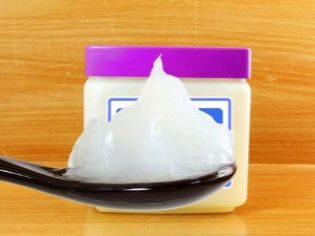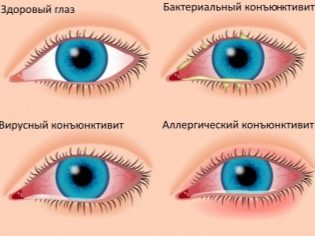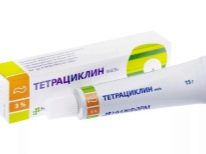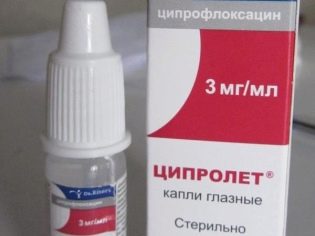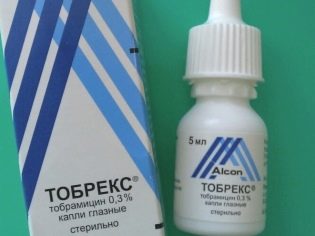Eye tetracycline ointment for children: instructions for use
In childhood, eye inflammation is quite common and is usually caused by pathogenic bacteria. For this reason, antibacterial agents are often prescribed for local use to eliminate redness, burning, swelling, and other uncomfortable symptoms. One of these drugs is tetracycline.
For the treatment of eye diseases, a special form of this antibiotic is produced - eye ointment. It has been used for a long time and has proven its effectiveness in bacterial eye infections. However, before using this form of medication in children, it is worth knowing more about the composition and effect of the drug, as well as how to properly apply the drug to the areas affected by microbes.
Release form
"Tetracycline" in the form of ointment, which is used in ophthalmology, is produced by several Russian pharmaceutical companies. The drug is a yellow or yellowish-brown mass, packaged in tubes of aluminum. One tube holds 3, 5 or 10 grams of medication.
Composition
The concentration of the active ingredient in the tetracycline eye ointment is 1%. The active ingredient of the drug has the same name and is represented in the drug in the form of tetracycline hydrochloride. Its amount in 1 gram of the drug - 10 mg, and per 100 grams of ointment, respectively, 1 g. To give the drug the desired consistency and ensure easy application, the composition of the ointment includes inactive components represented by anhydrous lanolin and petroleum jelly.
How does it work?
Tetracycline ointment is a group of tetracycline antibiotics that have a bacteriostatic effect. Such a medicine inhibits the process of synthesizing new protein molecules in microbial cells, which prevents their growth and disrupts reproduction. Tetracycline notes activity against a rather large list of bacteria, among which are staphylococcus, Klebsiella, gonococcus, E. coli, pneumococci, and many other microorganisms.
The drug also affects chlamydia, proteus, pseudomonads, bacteroids, many strains of streptococci. Viral particles and fungi are insensitive to tetracycline effects. Note also that after laying in the eyes, the medicament is almost not absorbed, which mainly ensures the local action of such an antibiotic and the absence of negative overall influence.
When is it used?
The reason for prescribing "tetracycline" is an eye disease that is caused by bacteria or chlamydia. The drug is in demand in such cases:
- Ointment is most often used. with conjunctivitisThe symptoms of which are viscous discharge of yellow or gray color. They are formed in a large volume, and after sleeping it is difficult for the child to open the eyelids. With this disease, reddening of the eyes, feeling of a foreign body in the eye (or feeling of sand), dry skin around the eye and other signs are also noted.
- The medicine is prescribed if conjunctival inflammation has spread to other eye membranes. “Tetracycline” is needed if the child has been diagnosed with bacterial keratoconjunctivitis (the infection has seized the cornea) or blepharoconjunctivitis (the disease has passed for eyelids).
- The drug is used with blepharitis, when bacteria “attack” the edges of the eyelids and cause a chronic inflammatory process. Such a disease is manifested by itching and burning, swelling of the eyelids and their redness, as well as tearing and increased eye sensitivity to light and stress.
- Another reason to dispense "tetracycline" is maebomite The second name for such an eye infection is “barley”. With her, the eyelid becomes red, swollen and sore, and in some patients the body temperature rises.
- Ointment is also prescribed to patients with trachoma So called eye infection caused by chlamydia. It usually damages the cornea and conjunctiva, leading to scarring and reduced vision.
Is it assigned to children?
Opening the paper manual, which is attached to "Tetracycline" in the form of eye ointment, you can see in the contraindications age to 8 years. Such age limits are associated with the lack of clinical studies confirming the safety of the drug for young children.
However, ophthalmologists often prescribe tetracycline ointment to children under eight years of age, including toddlers aged 2-3 years and infants. In their opinion, the drug has confirmed its safety for young children after many years of use, and it causes extremely rare side effects and complications.
Some doctors also use this "tetracycline" for bacterial cold, but most experts prefer to write out special forms for instillation or laying in the nose if the nasopharynx is damaged.
Features of use in children
In order for Tetracycline not to harm young children, it is important to observe some precautions. First of all, it is necessary to follow the prescription of the doctor and use the ointment as often and as often as prescribed by a specialist. In addition, before treating a child’s eyes, an adult should wash their hands thoroughly.
It is also important to be careful when buying, as the ointment "Tetracycline" is of two types. In addition to the drug for the treatment of the eyes, there is also a 3% medicine intended for treating the skin. This ointment is prescribed for eczema, boils, inflamed wounds, chickenpox, acne and other skin problems. Another form of tetracycline is tablets.
Contraindications
The use of "Tetracycline" for eye diseases is prohibited:
- in children with hypersensitivity to tetracycline antibiotics or inactive ingredients of the drug;
- in patients with severe kidney disease;
- in children with impaired liver function;
- if eye infection is caused by pathogenic fungi;
- in patients with systemic lupus erythematosus;
- with stabbing or deep damage to the organ of vision;
- with severe eye burns.
Side effects
After applying the ointment to the eye shells, in rare cases an allergic reaction may occur, for example, the eyelids swell or redden. In some children, the use of "Tetracycline" provokes visual impairment (patients complain of blurred), which soon passes.
Instructions for use
The drug is used as follows:
- having carefully pulled the lower eyelid down, you need to lay for him as much ointment as prescribed by the doctor;
- after releasing the eyelid, press it with a cotton pad or tampon for one minute;
- then you should ask the child to close his eyes for 1-2 minutes so that the medicine is evenly distributed;
- if the treatment is prescribed to the infant, it must be ensured that, after treatment, he does not rub his eyes with his hands.
When keratitis treatment is performed 2-3 times a day, and with conjunctivitis or blepharitis - a little more often (3-4 times a day). The duration of treatment with tetracycline is usually from 5 to 7 days. However, if more than three days have passed since the beginning of the application of the ointment, and no improvement is visible, you should consult a doctor.
For the treatment of "barley" ointment is laid in the diseased eye before bedtime. The drug is used until the moment when the symptoms of such an infection disappear completely. If the patient was diagnosed with trachoma, the treatment regimen provides for the use of tetracycline ointment from 7 days to 2 months.
At the same time, at the beginning of therapy, eye treatment should be done every 2-4 hours, and when the symptoms of inflammation begin to subside, they switch to two or three times the use of ointment.
Overdose and compatibility with other drugs
Since tetracycline ointment is a topical medication and its components practically do not enter the general circulation, overdosing this drug has no toxic effect.
As for drug interactions, the manual does not contain any information about this, but the simultaneous use of any other ointments or drops in the treatment of eye diseases is recommended only as prescribed by a doctor.
Terms of sale
Tetracycline eye ointment refers to drugs that are sold without a prescription, so there is no problem with the purchase of such a drug in a pharmacy. The average price of a tube, which contains 3 grams of medicine, is 50 rubles.
Storage conditions
To prevent the drug from spoiling, you need to store the tube with the ointment at a temperature below +15 degrees, putting the medicine in a dry place where the sun's rays do not fall. In addition, such a place should be hidden from small children.
Shelf life of a sealed "Tetracycline" is 3 years, but since the first use, the duration of storage of the drug is usually reduced. For this reason, the time must be specified in the paper instruction attached to the tube. It can be 5 weeks or 3 months.
After completion of the period specified by the manufacturer, it is not possible to use the ointment in treating children.
Reviews
Tetracycline eye ointment receives mostly positive reviews from parents. This medicine is called effective, affordable and easy to use. According to moms, ointment treatment quickly eliminates discomfort in the eyes. In this case, the drug itself in most cases does not provoke a burning sensation or other negative symptoms. In some negative reviews there are complaints about the lack of the desired therapeutic effect or an allergic reaction.
Analogs
If for any reason it is impossible to use "Tetracycline" in the eye, the doctor will prescribe instead of such a medicine another means in demand in ophthalmology that can destroy harmful bacteria. Such a drug can be:
- «Floksal». This medicine is released not only in the form of eye ointment, but also in liquid form (eye drops). Its action on pathogenic microbes provides ofloxacin. The drug can be used in patients of any age.
- «Tsiprolet». One of the forms of this drug are eye drops, used for bacterial damage of the organ of vision in children over 1 year of age. The active substance of this drug is called ciprofloxacin.
- "Vigamoks". Such moxifloxacin-based eye drops are required for bacterial inflammation of the conjunctiva. They can be used in children older than a year.
- «Levofloxacin». For the treatment of eye diseases use such eye drops containing the same antimicrobial substance. Children are prescribed at the age of 1 year and older.
- «Tobrex». The antibacterial effect of such drops is due to tobramycin. The drug is considered safe for babies and can even be administered to infants.
How to put ointment in the eyes of a child with conjunctivitis, see the following video.



